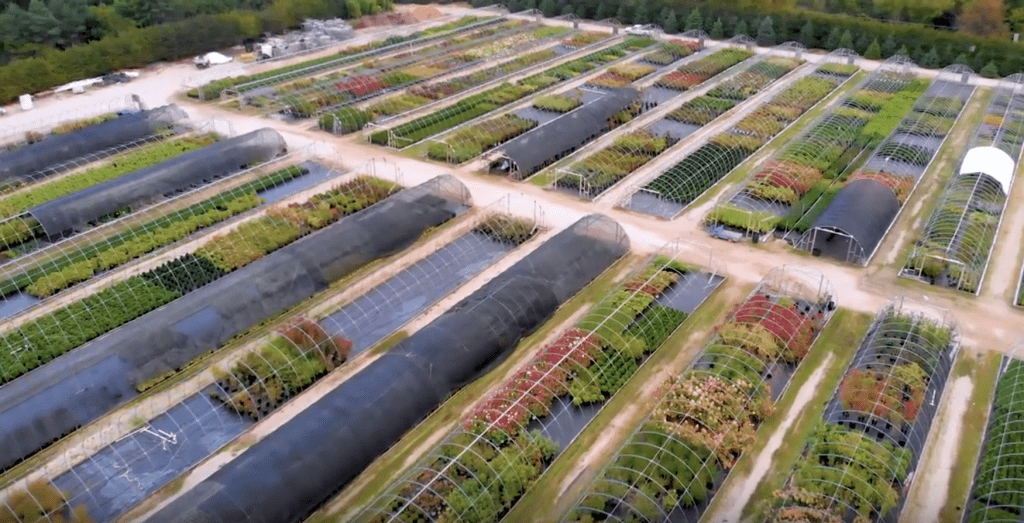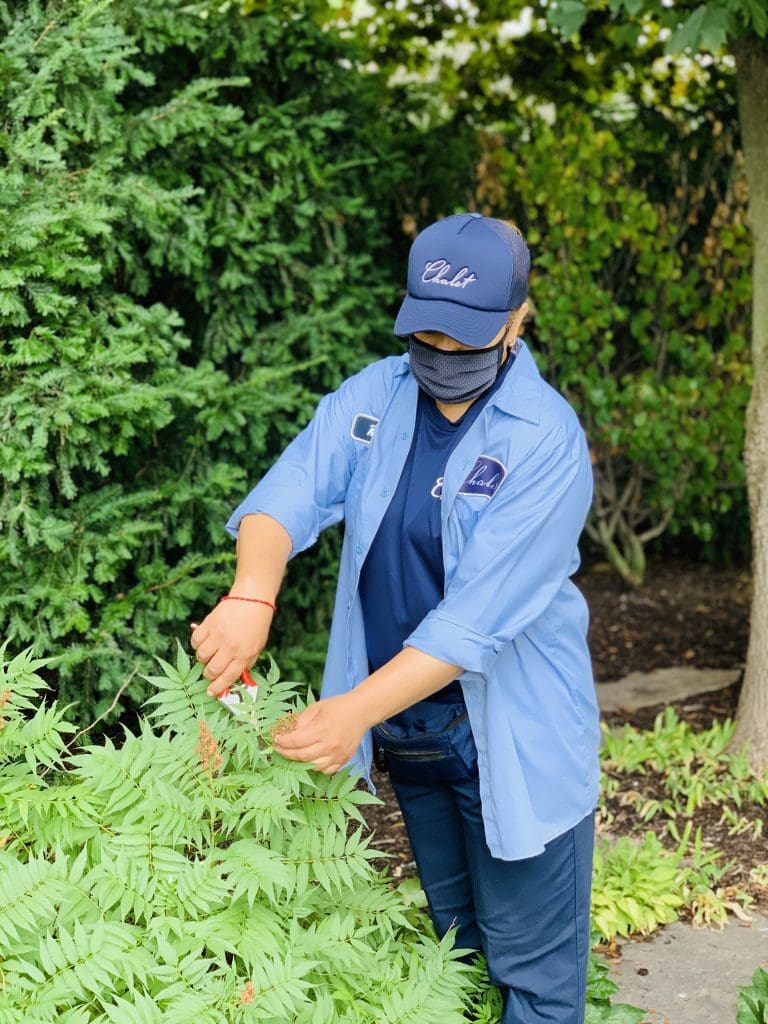
Our Level Up series shares the strategies that help landscape and lawn care companies get to the next level.
Chalet was started in 1917 by landscape architect L.J. Thalmann. He served the North Shore outside of Chicago by mowing lawns and doing landscape designs.
Since then the company has been passed down two generations with Larry Thalmann as the current president and CEO. Chalet has been in business through two world wars, the Great Depression, the financial crisis in 2007-2009 and most recently the COVID-19 pandemic.

Despite these various challenging times, the company has been able to grow to around 200 employees.
“During this century we have grown our landscape business to include not only the landscape maintenance services but also a robust design/build division, plant health care department and industry-leading soil and turf division,” says Garth Sager, director of sales and client relations. “Changing times have required us to work smarter, utilize technology and always be on the leading edge of new products, services and design aesthetics.”
Now Chalet’s landscape division produces approximately $20 million in annual sales, $13.5 million in maintenance and enhancements, $5 million in design/build work and $1.5 million in design studio work, servicing smaller-scale garden refresh needs.
The company’s client base is 90 to 95 percent high-end residential with around 5 to 10 percent being commercial.
Over the years Chalet’s growth has been steady, with certain departments experiencing exponential growth due to strategic refocusing. The company’s most popular services are their landscape maintenance and enhancement services.
“This is an area of renewed focus for us over the past several years, and we have experienced over 50 percent growth in this category over the past 4 years,” Sager says.
Expanding Services
While Chalet started primarily as a maintenance company, they are now a one-stop resource for all outdoor and many indoor needs. They’ve added many services such as in-house IPM, soil and turf management and large-scale design/build services.

Two notable expansions are Chalet’s nursery and their e-commerce platform. As the company continued to grow, they developed an insatiable need for quality plant material and eventually it became clear they could not rely solely on other growers. In 2004, Chalet started their own growing operation at their farm in Salem, Wisconsin.
“Today, we have about 180 acres dedicated to growing a large percentage of the plants we sell through both our landscape and retail channels,” Sager says. “By growing for ourselves, we can confidently stand behind the quality of our product. Since we’re growing those plants locally, they will acclimate well when they are planted here on the North Shore. It helps by increasing the success rate of the plants. Not only does it make for much happier plants, and it also allows us to lower our carbon footprint by dramatically cutting the distance of our supply routes.”
Chalet also has a retail side of the business that started as a garden center. Now it is a one-stop “lifestyle-focused” brand that has a brick-and-mortar shopping experience as well as a dedicated e-commerce presence that they launched in 2017.
“We embrace the omnichannel approach, empowering our customers to choose how they want to shop,” Sager says. “Having our online store available served as a great advantage especially when we navigated through the whole Covid shut down period.”
Keys to Success
Chalet’s keys to success are focusing on their core clients, having the ability to cater to a diverse range of opportunities and their people.
Sager says while they have thousands of clients, around 600 to 700 of their clients make up 70 percent of their revenue.
“By creating dedicated single points of contact for these core clients, we are able to give them the service and attention needed to maximize the potential of the properties and the customer experience,” Sager says. “This, in turn, drives high-margin revenue.”

While some landscape companies approach opportunities as ‘full-service or nothing,’ Chalet opts to work with people who may fall out of this category. Sager says even though their full-service maintenance clients tend to be their largest source of revenue, referrals and profit, they’ve still found these other types of customers of value.
An example of this is Chalet’s newly focused design studio department. The design studio provides small designs and project work to people who may not be interested in Chalet’s full package of recurring maintenance or robust design/build service.
“Since we have both a contracting and a retail organization, our visibility and client mix often brings in this smaller opportunity size,” Sager says. “By segmenting these smaller opportunities to a dedicated group of people, we are able to service them with minimal disruption to the parts of our operation that are more focused on larger opportunities.”
While this department isn’t a major revenue generator, the jobs are profitable and Chalet can cater to clients who may have gone elsewhere for their small project work.
“Rather than involving subcontractors and other lower-margin work, the opportunities tend to be heavy on plant material, which is a high-margin component of the work that we do,” Sager says.
Sager says to deliver a high-level experience to their high-end clientele, they need people to manage those relationships.
“Without fail, as we have added people to client-facing roles and kept individual client loads in check we have experienced sales growth, and in times where staffing has been challenged, sales and revenue have experienced challenges as well,” Sager says.

Sager says a huge component of what helps them stay innovative is their people.
“Over the years Chalet has brought on different people with unique perspectives and skillsets which has helped us create the most well-rounded team in the industry,” he says.
Chalet is constantly observing and reacting to the changing world around them and stays agile to meet clients’ expectations.
“People interact with vendors differently now, as they expect quick responses and utilize technology,” Sager says. “Over the years that Chalet has existed, we have gone through communication via telegram, written letters, fax and email. Today many clients can now communicate with us through a full array of digital touchpoints including our website, texts, and social media.”
Chalet has also benefited from their involvement with NALP. They have attended NALP’s annual meeting, NCLC and spent time in NALP affiliated peer groups.
“NALP is such a valuable resource to us, and we are lucky to be such of a tight-knit industry that values continued growth, education and peer-to-peer collaboration,” Sager says.
Recruiting and Retention Methods
Sager says staying fully staffed has been a challenge at times and they have to be cognizant of their employment levels to keep up with their commitments to their clients and keep employee workloads reasonable.

They use a number of recruiting methods including LinkedIn and ZipRecruiter, billboards and signs outside of the facility. Sager says they’ve had a lot of success with internal referrals from other employees as they offer a referral bonus.
He credits their retention to their company culture, where they strive to provide a fun, safe, collaborative culture for the team. They hold regular company events from golf outings to holiday parties.
They also work to help people reach their full potential. Sager says they listen to their people and encourage new ideas and perspectives.
“We have maintained our company culture by keeping employees engaged, both internally and within the industry,” Sager says. “We do a weekly newsletter featuring different team members, both related to Chalet activities as well as personal accomplishments (birth announcements, weddings, work anniversaries, birthdays).”
He says all of this comes together to make their team feel valued and want to continue calling Chalet home.
Click here to read more Level Up stories.

